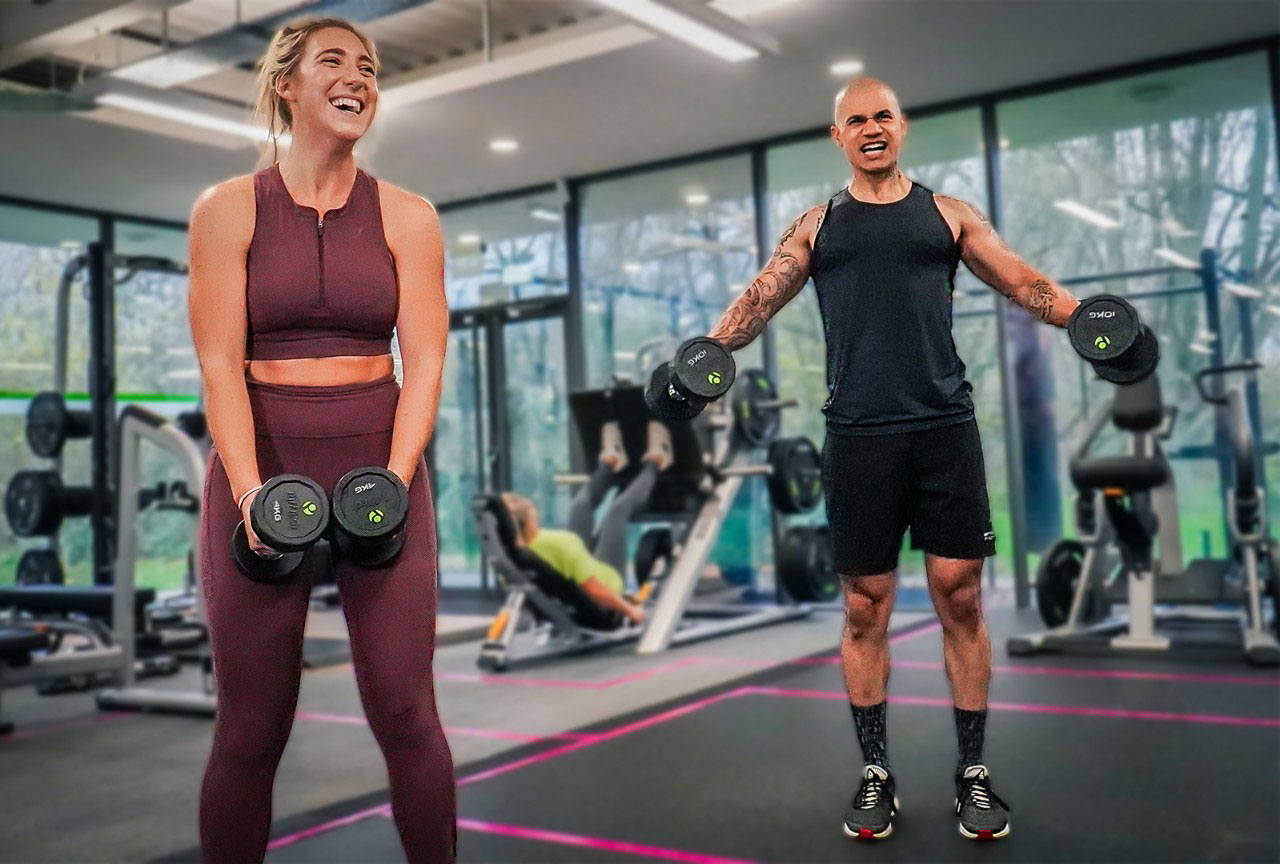Fitness expert warns “follow the correct form, or don’t bother working out” – why you’re not seeing results REVEALED
- Fitness experts at bulk warn Brits that they won’t see results unless they’re following the correct form when working out
- People are also more likely to give up on working out altogether as they get discouraged after seeing very slow progress, a nutritionist says
- Following an analysis of over 200 workout videos, bulk.com found that the most common exercises people do are planking, squats and push-ups
- Tips to follow the correct form for the common exercises are revealed – and Brits are encouraged to keep their motivation up after Jan’s gym rush ends
Fitness experts at bulk have stressed the importance of making sure Brits follow the correct form when working out, or else risk not seeing results and giving up on keeping fit.
As the January gym rush has ended – with Google searches for ‘gym memberships’ plummeting by 55% since peaking last month – many Brits won’t be pleased with the progress they’ve made, as they’ve not been exercising in the right way.
The training experts at bulk said: “After the initial motivation to get fit at the start of this year ends, many will find themselves reflecting on their gym progress and getting discouraged, as they’re not where they expected to be – but there’s usually an easy explanation.
“Progressive training is the key to seeing results – but it doesn’t work if you’re not following the correct form for each exercise, or pushing your body enough. Unfortunately, a lot of inexperienced Brits take to the gym in January without doing their research on how to workout effectively, and so often give up after not seeing a big enough change in February.
“Whilst this gap in knowledge is due to inexperience for many, others will just assume that they know the correct way to exercise without seeking any confirmation or advice. The reality is, they almost might as well not bother putting the effort in unless they do so properly!”
Abi Roberts – bulk’s nutritionist – added: “Learning how to do key exercise movements correctly is essential to both avoiding injury and staying motivated. Proper form not only reduces the risk of strain or injury to muscles, joints and tendons – it also allows people to target the intended muscle groups more effectively, which leads to better results, a greater confidence, and an increased motivation to pursue their fitness journey.”
To determine which exercises Brits are most likely to be doing incorrectly, bulk analysed over 200 workout routines on YouTube and tallied which moves appeared most frequently – with planking, squatting, push-ups, lunges and glute bridges amongst the most common.
Common planking mistakes named
Planks appeared in almost half of the workout videos (45%) – primarily those targeting abs – whilst nationwide Google searches for ‘how to plank’ have risen 4,800% over the last month.
Speaking on the correct way to hold a plank, the experts said: “One of the biggest mistakes people make when planking is arching their back, which puts unnecessary strain on the arms and can cause you to quickly tire out from supporting your bodyweight incorrectly.
“The best way to ensure you’re following the correct form is to imagine you’re a table, and keep your back straight and taught with your hips low – you’ll know it’s working when your abs start to burn. You should also look straight ahead rather than down at the floor, as this extends your back. Even if it’s awkward to do so at the gym or in an aerobics class – keep those eyes focused forward!”
More advanced planks that appeared frequently in the workout videos included plank jacks, plank lunges, Spider-Man planks and side planks, recommended for experienced exercisers.
The correct way to squat revealed
Squats were featured in two fifths (40%) of the workout videos, having risen in popularity as a leg, thigh and glute workout – particularly amongst women who want a peachier behind.
But squatting isn’t as easy as it looks, as the experts explain: “Squats are incredibly diverse, working as a standalone workout, as a set within a full routine, or even as a dance move. This means that many people end up doing them incorrectly because they seem so easy.
“Common mistakes people make when squatting are to start bending at the knee rather than pushing down from the hips, and extending their knees too far forward so they go past their toes. All this does is put pressure on your knees, which can result in an injury, and means you’re not actually tensing your thigh and glute muscles in the right way.”
How to pull off a push-up properly
Push-ups appeared in a third (35%) of the workout videos, and were most often included in arm, chest and full body workouts. According to the experts, it’s another exercise that looks deceptively easy and is often done incorrectly.
They said: “Push-ups are one of those exercises that can be easily scaled up and down in difficulty to suit a variety of skill levels; but this often means people revert to the easier variant without needing to, meaning they won’t reap the results.
“Make sure that your hands are positioned directly under your shoulders and that your hips are level in order to engage your core, and that your chest almost touches the floor. Also, you don’t want to go plummeting towards the ground – make sure that your descent is controlled and that your elbows don’t point too far out.”
Common mistakes made when lunging
Lunges frequently appear in boot camp classes, bodyweight exercise routines and full-body workouts, including a quarter (27%) of the workout videos analysed on YouTube.
Speaking on the popularity of lunging, the fitness experts said: “Lunges, like squats, are an exercise that it’s very easy to perform incorrectly and throw off balance – which unfortunately can negate their benefit almost entirely. When lunging, make sure not to step too far forward as this causes pressure to be absorbed by the front knee, running the risk of injury.
“As with squats, you need to pay attention to your posture. Try to keep your knee aligned with or behind your ankle on the way down, and avoid bending your upper body or arching your back on the way back up. You also need to ensure that your front heel is flush to the floor, or else you’ll end up with a wobbly and ineffectual lunge.”
Various lunge variations appeared across the workout videos, including lunge jumps, lunge taps, lunge squats, plank lunges and side lunges, showing their diversity.
How to do a glute bridge properly
Glute bridges appeared in just over 1 in 10 (14%) of the routines, the majority of which targeted the legs, glute and full body. They’re also considered to be one of the more difficult moves as tight hip flexors can prove particularly hard for those with sedentary lifestyles.
The experts said: “Glute bridges are very popular as they isolate the glutes, and also incorporate the hamstrings, quads and core, meaning you can really feel the burn and benefit after incorporating them into a workout. However, many people don’t manage to pull them off properly because of spacing and ascent issues that impact their effectiveness.
“Most exercisers end up thrusting their hips too high at the top of their glute bridge, which hyperextends the lower back and ends up incorrectly shifting the pressure from the glutes. It’s also easy to push through your toes instead of the heels, which causes additional strain on the quads and calves. It’s also recommended to pulse your glute muscles at the top – or ‘squeeze’ them – for two seconds, to ensure they’re contracting for additional stimulus.”
For those who haven’t seen the results they expected after their January gym sessions, it’s never too late to learn the correct form and start working out in the right way.









